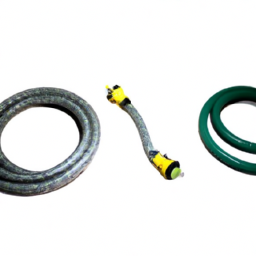Garden Hose Fitting What Size
What Size Fitting Is A Garden Hose
What Size Fitting Is A Garden Hose?
Before deciding on a garden hose for your garden, determining the correct size for both the hose and the fittings is an essential step. Depending on what you intend to use it for, the wrong size could cause issues with water flow, kinking, or even leakage. In this article, we will delve into the different sizes for hoses and fittings, what types of fittings to look at, and offer tips for gardeners on choosing the best and most appropriate garden hose and fittings for their needs.
Garden Hose Sizes
Garden hoses come in a variety of sizes, with the most common being 5/8 inch, followed by 3/4 inch. However, this does not refer to the interior or exterior diameter, but rather the diameter of the threads on the fittings. Fittings on hoses have a male (outside) and female (inside) end that can be connected to fixtures such as garden faucets and sprinkler valves.
5/8 inch
The 5/8 inch hose is the standard recommended hose size for basic residential jobs. However, if a longer length hose is required, opting for 1/2 inch diameter hose may be beneficial, as it reduces the water flow and the flow rate, allowing for a longer hose than a 5/8 inch diameter can provide.
3/4 inch
The 3/4 inch hose is much wider than the 5/8 inch and is primarily used for industrial and commercial applications. It offers a greater water flow rate but can require more pressure than the 5/8 inch hose. The larger diameter also causes it to be heavier and less malleable when in use which can cause kinking. It is more expensive than the 5/8 inch hose and is not recommended for residential uses.
Hose Fittings
Garden hoses use fittings, or adapters, to allow a connection between different fixtures. Different hose fittings are designed for connecting hoses together or connecting the hose to other appliances such as faucets and sprinklers. Most fittings have both a male and female end, but some fittings are designed for single connection and require no second end, such as a hose splitter.
The most common hose fittings for residential use are nitrogen-proof brass fittings. They are strong and very durable, as well as resistant to corrosion. They are also relatively inexpensive and easy to find. Other materials such as stainless steel, plastic, and aluminum are also used in some cases.
Garden Hose Adapters
Garden hose adapters are also known as "reducers". These allow the connection of hoses of different sizes and can be used to connect different ends of a hose to the same fixture. For example, a 3/4 inch to 5/8 inch adapter will allow a 5/8 inch hose to connect to a 3/4 inch nozzle or connector.
Tips For Choose the Right Garden Hose and Fittings
When choosing a garden hose, consider what type of tasks you plan to use it for. Determine if you need a longer hose or a wide diameter, and remember that a longer hose will require more water pressure to provide the same flow rate. Also, choose the appropriate fittings for your needs, and if possible, opt for metal fittings, as these are more durable and resistant to wear and tear. Finally, make sure that the diameter of fittings and hose are the same, as the wrong size could cause problems with water flow, water leakage, or even kinking.
Brief Recap
Picking the right garden hose for the job is essential before starting any garden-related task. Garden hoses come in two main sizes, 5/8 inch and 3/4 inch, and it is recommended that the 5/8 inch is used for residential applications. Fittings can also differ in material, the most common being nylon-proof brass that is resistant to corrosion, but other materials may also be used. Adapters are also available to connect hoses of different sizes to the same fixture and remember that the size of the fittings and the hose must be the same.
Choosing the right garden hose and fittings can be confusing, but hopefully this article has helped to shed some light on the subject. Knowing the size and material of the hose and fittings needed is essential for having a successful garden.

Previous Page
Next Page
